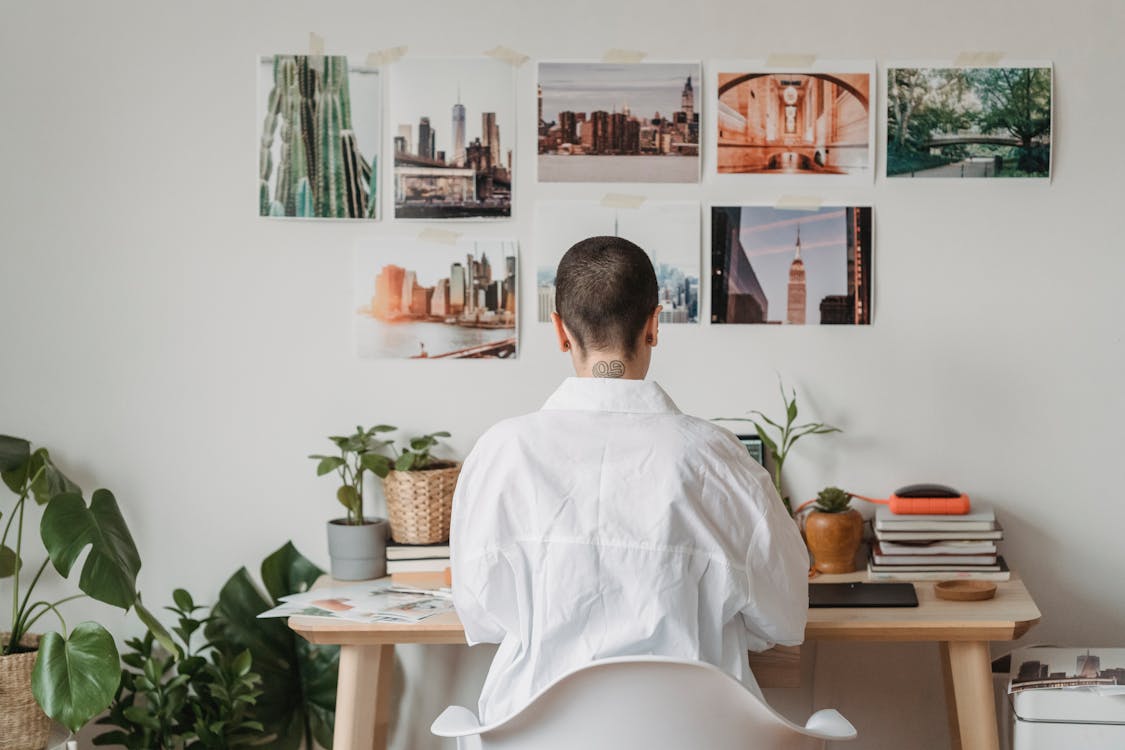
How to Design an Eco-Friendly Home Office for a More Sustainable Future
It’s easy to ignore how much waste and energy our home offices create. A few too many impulse buys, some cheap furniture that doesn’t last, and piles of unused gadgets add up.
But the good news is that you don’t have to overhaul your entire life to build a workspace that’s better for you and the environment; a few thoughtful changes can make a difference.
Here’s how to set up a home office that feels good, works hard, and leaves a lighter footprint.
Practical Ways to Make Your Home Office More Eco-Friendly
You don’t need to go extreme or spend a ton of money to make a difference. These small, doable changes can help you create a more sustainable setup, without sacrificing comfort or productivity.
Start with What You Actually Use
First things first: don’t buy anything yet.
Take a look at your current setup. What’s working? What’s not? Be honest with yourself.
- Are you sitting for hours and need better back support?
- Do you mostly work digitally, or do you still need space for paperwork?
- Do you spread out a lot or stick to one corner?
Knowing how you work day-to-day helps you avoid unnecessary purchases — and that’s one of the easiest ways to cut down on waste. You don’t need more stuff. You need the right stuff.
Repurpose Before Replacing
A lot of the best sustainable offices didn’t start with a shopping spree.
Check what you already have. That old wooden dining chair? It might make a great desk chair with a comfy cushion. Got an unused side table? Boom — new printer stand.
Take solid wood office desks — they’re a good example of something durable and built to last.
Choose Materials That Won’t Pollute Your Space
Here’s something people don’t talk about enough: the air in your home office matters. A lot.
Synthetic furniture, certain paints, carpets, and glues often give off VOCs (volatile organic compounds), which can mess with your focus, trigger headaches, or just make your space feel…off.
So, what can you do?
- Look for zero- or low-VOC paint.
- Avoid furniture made with heavy foam or materials that give off that strong, chemical “new” smell.
- Let fresh air in when you can.
Trust us — your lungs (and brain) will thank you.
Use Natural Light — It’s Free and It Works
Good lighting can completely change how you feel and how well you get things done. If you’ve got a window, use it. Set up your desk nearby, but try not to face it directly — glare is the worst.
And if you need more light (which most of us do), go for LED bulbs. They use less energy and last longer. A small desk lamp can work wonders without blasting the whole room.
Not only will this help reduce energy use — it’ll just make your space feel better to be in.
Cut Back on Energy Use Without Sacrificing Comfort
Being energy-efficient doesn’t mean freezing in winter or working by candlelight. There are simple ways to reduce energy waste without making yourself miserable.
Try this:
- Plug your electronics into a smart power strip.
- Set your screen and computer to automatically sleep if you step away for 10 minutes.
- Unplug chargers when you’re not using them.
- Choose Energy Star–rated devices when replacing gear.
Also, small things like adding a rug or sealing up a drafty window can keep the space warmer in winter and cooler in summer. It’s less about extremes and more about small, smart adjustments.
Don’t Force “Paperless” — Just Be Smarter About It
Going fully paperless sounds great, but it doesn’t always work in practice — especially if your work still relies on contracts, reference materials, or hand-written notes.
The goal isn’t to ditch paper altogether. It’s to waste less.
You can:
- Print double-sided.
- Reuse paper for notes and scribbles before recycling.
- Choose recycled paper when restocking.
- Use refillable pens or mechanical pencils.
If you just reduce how much paper you use and how quickly you toss things, you’re already doing better than most.
Bring in a Bit of Nature
Want an easy way to make your space feel fresh and calming? Add a plant.
No, you don’t need to be a plant parent with a watering schedule. Just get something low-maintenance — like a pothos, snake plant, or ZZ plant — and stick it near your desk. They’re tough plants that don’t need much light or constant attention to thrive.
Plants also clean the air, boost your mood, and make your office feel more like a space you actually want to be in. That counts.
Build Better Habits — No Guilt Trips Required
You can start with just one thing: upgrading your lighting, reusing furniture, switching to better materials, or simply printing less. Whatever feels manageable.
What matters most is sticking with it and occasionally reassessing what’s working.
Is this setup working? Is it sustainable? What could I tweak?
Over time, those little decisions add up. Your office becomes more functional, less wasteful, and a better reflection of what matters to you.
Final Thoughts
You can build a more sustainable home office without downsizing everything or blowing your budget. Just make a few smart choices, get a little creative, and give yourself space to improve over time.
It’s your workspace — you get to shape it. Why not make it better for both you and the planet?